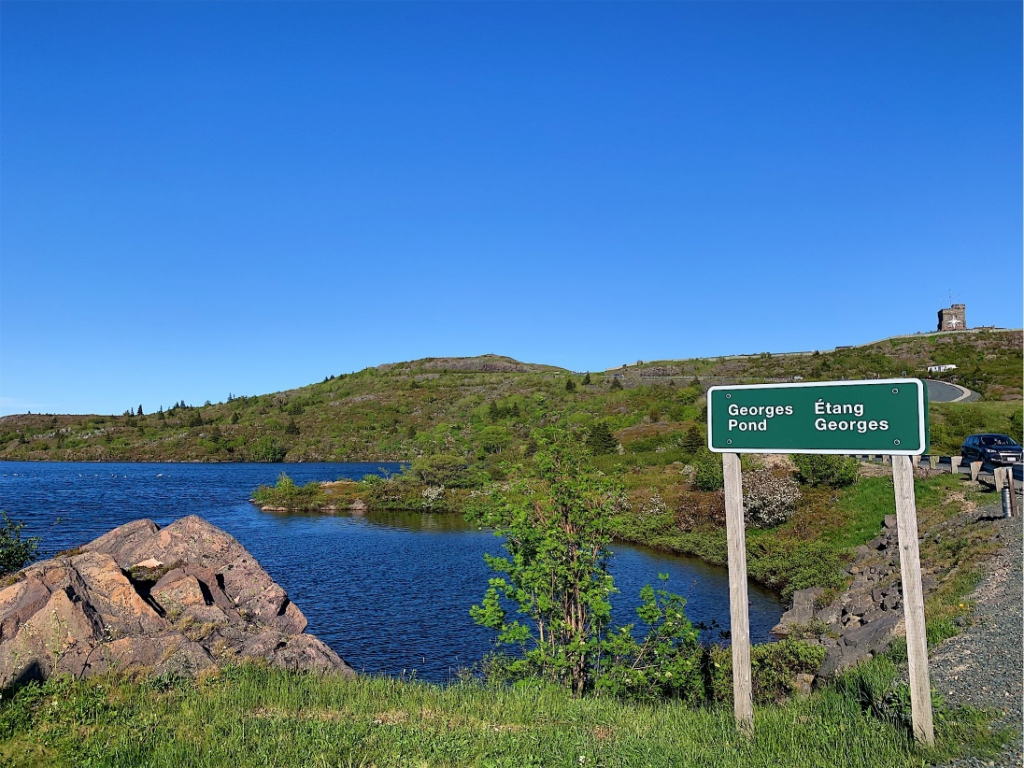St. John’s Water System, St. John’s, NL.

Site Location: Lat.: 47° – 36’ – 26” N; Long.: 52° – 46’ – 8” W. (GPS: 47.6072481, -52.7690077). Windsor Lake Water Treatment Plant: From Trans-Canada Highway 1, take Exit 47A, Portugal Cove Road/NL-40 N. Proceed 3.5 km and turn left (south east) on Airport Heights Drive, and after 0.2 km turn right (south west) on Parker Pond Road. The Windsor Lake Water Treatment Plant is on the right. George’s Pond: is about 100 m northeast of the Signal Hill Visitor Centre.

Plaque Location: The plaque is mounted on a wall in the administrative area near the visitor entrance of the Windsor Water Treatment Plant. Visits to the facility are by appointment only.


Description: The Water System of St. John’s developed in two parts, and took the best part of a century to resolve. Originally designed by British engineers, the system was plagued with problems that the engineering know-how and technology of the time seemed ill-equipped to deal with. The original Water System of St. John’s consisted of George’s Pond on Signal Hill (1846) and Windsor Lake, north of the city (1860), together with transmission mains and distribution networks throughout the older parts of St. John’s, along with historic screen houses and chlorination plants. Although intended to prevent loss of property due to catastrophic fires, its failure in July 1892 allowed The Great Fire to destroy most of the city.

Historic Significance: The St. John’s Water System is the second oldest in Atlantic Canada, and only three water systems are known to exist in British North America before 1850. It supplied potable water to allow for the development of St. John’s, and prevented water-borne disease following the cholera epidemic of 1854. It spurred industrial development and an efficient sewer system. Its broader impacts include: breaking the stranglehold of absent and foreign landlordism that hampered local ownership of properties; creating a mechanism that established civic numbering of city properties; and, paving the way for municipal government in Newfoundland.
The original Windsor Lake supply continues to supply the City of St. John’s with excellent quality water in quantity.

Plaque Wording: Canadian Society for Civil Engineering. CSCE. ST. JOHN’S WATER SYSTEM. A tribute to the civil engineers and all who helped design, build and maintain this, the second oldest water system in what is now Atlantic Canada. Started in 1846 at George’s Pond, Signal Hill, it was extended in 1860 by incorporating Twenty Mile Pond (Windsor Lake). After further upgrades at the hands of several notable British, Canadian and American Civil Engineers, it continues to form the core of the regional water system. Canadian Society for Civil Engineering. 2009.
SGCE. Site Historique National de Génie Civil. L’AQUEDUC DE ST. JOHN’S. En hommage aux ingénieurs civils et à toutes les personnes qui ont contribué à la conception, à la construction et à l’entretien de cet ouvrage, qui fut le deuxième du genre dans les provinces de l’Atlantique. Commencé en 1846 à George’s Pond, Signal Hill, le réseau fut prolongé en 1860 avec l’addition de “Twenty Mile Pond” (Windsor Lake). Il fut ensuite améloire grâce à la contribution d’éminents ingénieurs civils britanniques, canadiens, et américains, et il demeure à ce jour le coeur de réseau regional. Société canadienne de génie civil. 2009.
Plaque Unveiling Ceremony: CSCE President Guy Gosselin and St. John’s Mayor Dennis O’Keefe unveiled the plaque on May 27, 2009 at Windsor Lake. Gordon Jin, Chair of the CSCE Newfoundland and Labrador Section, formally presented it to the City. Alistair MacKenzie of the CSCE National History Committee was Master of Ceremonies. Reg Wallace, Chair of the CSCE National History Committee briefly described the historic sites commemoration program, and Steve Garland, Logistics Chair on the CSCE 2009 Conference Local Organizing Committee, described the historical attributes of the St. John’s Water System.